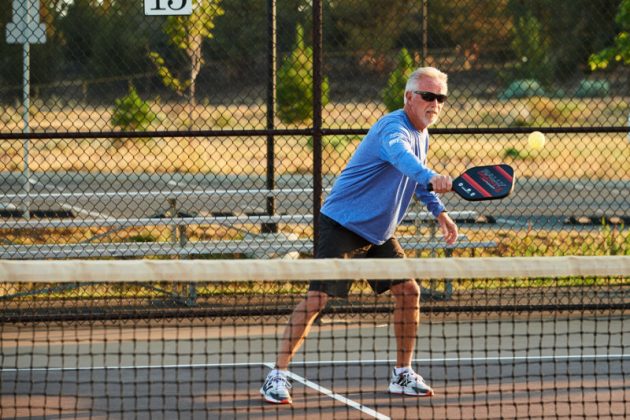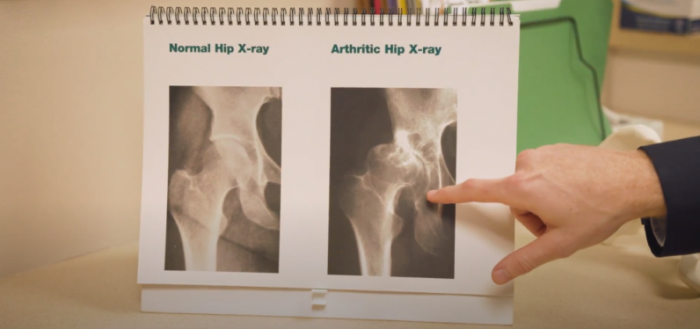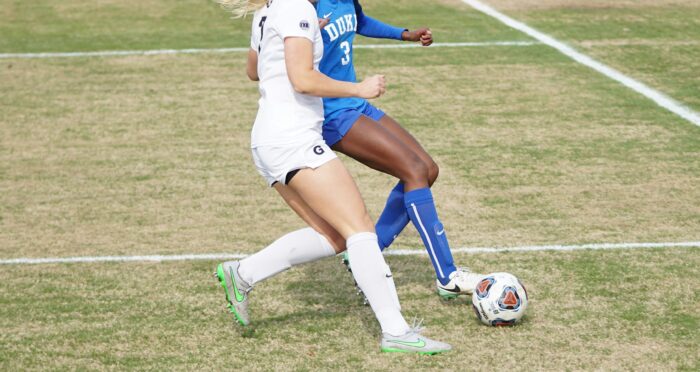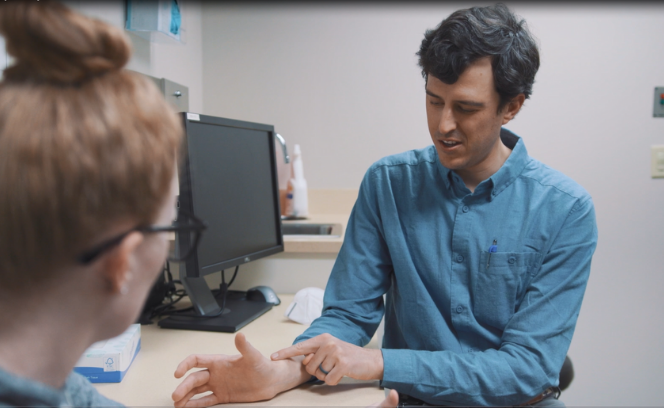
De Quervain’s tenosynovitis is a painful condition that affects the wrist and thumb, causing discomfort and limitation in daily activities. Understanding its causes, symptoms, and treatment options is crucial for individuals suffering from this condition to manage their symptoms effectively and regain normal hand function. The condition commonly arises from overuse, where repetitive motions strain the tendons, leading to inflammation and swelling. Individuals who perform repetitive tasks, such as lifting objects or typing extensively, are particularly susceptible to developing de Quervain’s tenosynovitis.
In this short video, hand and upper extremity specialist, Dr. Christopher Healy, addresses the common causes, symptoms, and treatment options for this common painful wrist condition.
Thumb anatomy
The tendons controlling the thumb are situated at the base of the thumb and are responsible for its movement. Tendons are rope-like structures that attach the muscle in your thumb to bone. Located on the thumb side of the wrist, two of the main tendons in the thumb pass through a tunnel, or series of pulleys. In order for these tendons to slide through their appropriate tunnel, a soft, slippery tissue layer called synovium covers the tendons. This tissue layer allows tendons to slide easily through a fibrous tunnel called a sheath.
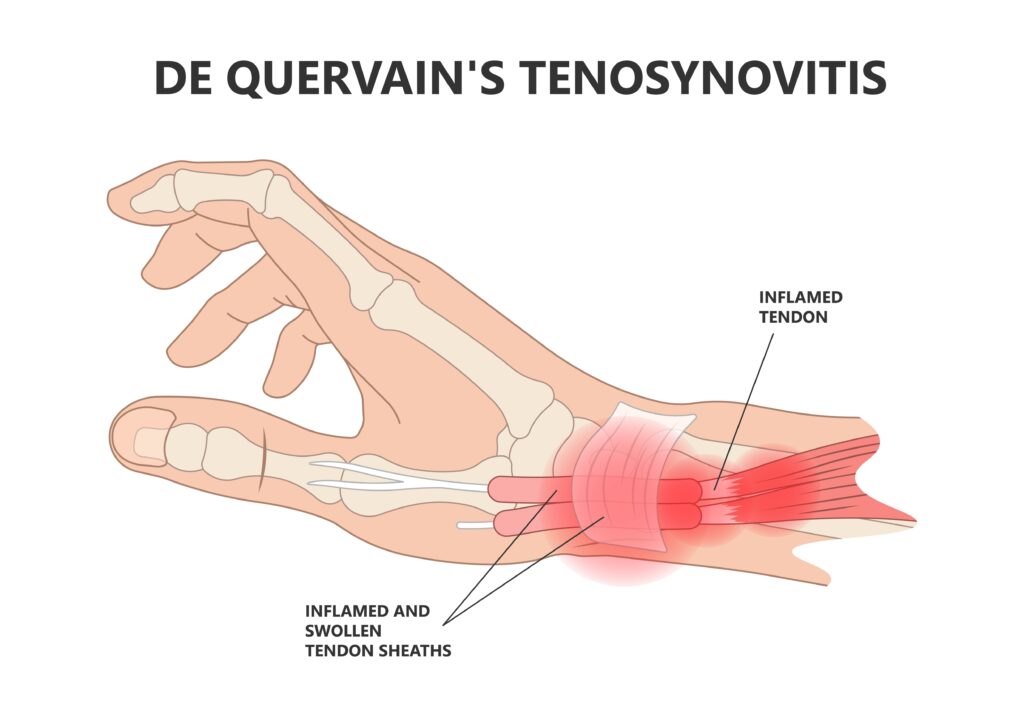 What causes de Quervain’s tenosynovitis?
What causes de Quervain’s tenosynovitis?
“De Quervain’s tenosynovitis is a mouthful, but basically what it refers to is a type of tendonitis on the thumb side of your wrist,” says hand and upper extremity specialist, Dr. Christopher Healy. “Patients usually get it from overuse, doing the same type of motion over and over again.” Another common name for the condition is de Quervain’s tendinosis, which refers to a swelling of the tendons. Someone suffering from de Quervain’s tenosynovitis experiences pain because the tendons in their thumb have become inflamed and swollen. This inflammation in the tendon keeps it from sliding through its appropriate tunnel as it typically would – smoothly and with ease.
Is “Mommy’s Wrist” de Quervain’s tenosynovitis?
Mothers and caregivers of young children can often suffer from “mommy’s wrist” or “mommy’s thumb” which is the same thing as de Quervain’s tenosynovitis. Younger women with the condition have often recently given birth or are breastfeeding. The repetitive actions involved in caring for infants, such as lifting and holding, can strain the thumb tendons, resulting in inflammation and pain. It is also common in women in their fifties and sixties.
What are the symptoms of de Quervain’s tenosynovitis?
The type of pain a patient experiences with de Quervain’s is pain specific to one corner of the wrist and can appear gradually or suddenly. It is particularly noticeable when forming a fist, grasping or gripping something, or when turning the wrist. Other common symptoms can include:
- Pain felt over the thumb side of the wrist. Pain can travel up the forearm and is usually worse when the hand and thumb are in use.
- Swelling over the thumb side of the wrist. This swelling may accompany a fluid-filled cyst in this region.
- A “catching” or “snapping” sensation may be felt when moving the thumb.
- Pain and swelling may make it difficult to move the thumb and wrist.
What are the treatment options for de Quervain’s tenosynovitis?
Effective management of de Quervain’s tenosynovitis involves both non-surgical and surgical interventions, depending on the severity of the condition. Non-surgical approaches focus on alleviating symptoms and promoting tendon healing.
Conservative treatment options for de Quervain’s tenosynovitis can include:
- Thumb splinting
- Hand therapy
- Adjusting the way you use your hand and wrist
- NSAIDs – anti-inflammatories such as ibuprofen and Tylenol
- Corticosteroid injections
- Ice/heat packs
- Massage
- Stretching
Surgery becomes an option when conservative treatments fail to provide relief. Surgical intervention aims to create more space within the thumb compartment, allowing the inflamed tendons to move freely without causing discomfort.
“We only do surgery for de Quervain’s if we’ve exhausted all of the non-operative treatment options and they haven’t worked. Conservative treatment options should be tried for at least six months before jumping to surgery options,” says Dr. Healy.
By treating de Quervain’s either non-surgically or surgically, normal use of the hand usually can be resumed once comfort and strength have returned.
Preventing de Quervain’s tenosynovitis
While there isn’t much that can be done to prevent de Quervain’s, usually the symptoms can be treated non-surgically as listed above. Preventing de Quervain’s tenosynovitis also involves understanding its causes and implementing proactive measures to reduce the risk of developing this painful condition. Whether you are a new parent, an athlete, or someone who engages in repetitive hand and wrist movements, taking steps to protect your wrist and thumb health is essential.
Ensure that your workspace is ergonomically designed, take regular breaks to rest and stretch your muscles, maintain good posture, and use proper lifting techniques. Incorporate warm-up and stretching exercises, as well as strength-training routines targeting the muscles surrounding the thumb and wrist. Consider using assistive devices or ergonomic tools during activities that put excessive strain on your wrists and thumbs, and avoid overuse by listening to your body and seeking medical attention promptly if you experience persistent discomfort or pain.
Helpful stretches and exercises for de Quervain’s tenosynovitis
Stretching muscles in the thumb can help relax and lengthen the tight muscles in the thumb, as well as improve range of motion. Increasing strength in the thumb can also help prevent and alleviate painful symptoms. Strength exercises for the thumb that can help decrease inflammation, improve function, and prevent recurrence include:
- Thumb lifts
- Opposition stretch (repeatedly bringing your thumb and pinky finger together to touch)
- Thumb flexion
- Finkelstein stretch
- Wrist flexion
- Wrist extension
- Wrist radial deviation strengthening
- Eccentric radial deviation strengthening
- Grip strengthening
- Finger spring
If you have taken steps to help reduce the pain in your wrist and it is still not getting better, you should be seen by an orthopedic doctor who specializes in hand and upper extremity conditions. A specialist can examine your wrist and take you through a diagnosis, explain what’s going on with your wrist and thumb, and explore promising options that will help resolve your pain.
Our hand and upper extremity specialists at The Center in Bend, Oregon use conservative, evidence based approaches to treat hand and wrist disorders like dupuytren’s, carpal tunnel syndrome, trigger finger, nerve injuries, and complex hand and wrist fractures. Our team is comprised of the highest trained and skilled hand surgeons in Central Oregon.
To make an appointment with one of our orthopedic specialists, call 541-382-3344.
Stay informed about upcoming webinars and events, and gain valuable insights on leading a healthy, pain-free life from our experts by subscribing to our monthly newsletter. Click the button below to join!
